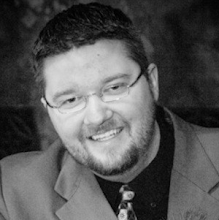One way as a follower to show your leadership qualities within your organization, right where you are at, is to bring your experience to the table. This is called understanding our experiential learning method and knowing how to position ourselves within the organization to learn and grow from the environment around us. Some individuals do it be observing and others by experimentation. Others need to think through an idea and others need to experience it. This is called experiential learning.
John Dewey, in his 1938 book "Experience and Education", denotes that there is continuity to the experience which builds upon our learning with each moment. He states, “As an individual passes from one situation to another, his world, his environment, expands or contracts” (Kolb, 1984, p.44). Dewey (1938) is signifying each experience as what molds an individual’s consciousness. He continues, “He does not find himself living in another world but in a different part or aspect of one and the same world” (Ibid). This shows the significance of each moment in shaping the world in which one lives. This “expanding” and “contracting” that Dewey (1938) speaks of is the very premise that forms Kolb’s (1984) experiential learning model. Dewey (1938) further notes, “What he has learned in the way of knowledge and skill in one situation becomes an instrument of understanding and dealing effectively with the situations which follows. The process goes on as life and learning continues” (Ibid).
William James (1890) previously made this observation in his studies on the human consciousness and its nature. He looked at how the conscious was continuous and that it was constantly being built upon. He would ask such questions, as Kolb (1984) illustrates, that inquire, “How is it…that I awake in the morning with the same consciousness, the same thoughts, feelings, memories, and senses of who I am that I went to sleep with the night before” (Kolb, 1984, p. 27)? We are always building onto our experience base.
We, as followers, need to always be learning within the organization and then applying our knowledge gained to our task at hand. We need to understand our learning style and find out how to diversify it to grow even further. Once you are able to understand the learning style of those around you, especially your leaders, you will be able to communicate your point more clearly in a way that they can understand, allowing you to stand up for the mission and vision of the organization, thus, being an effective follower.
Subscribe to:
Post Comments (Atom)




No comments:
Post a Comment